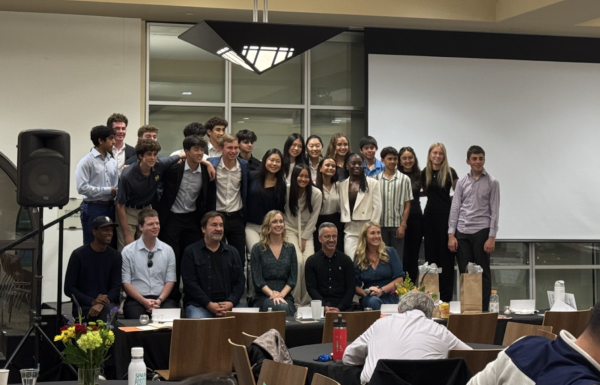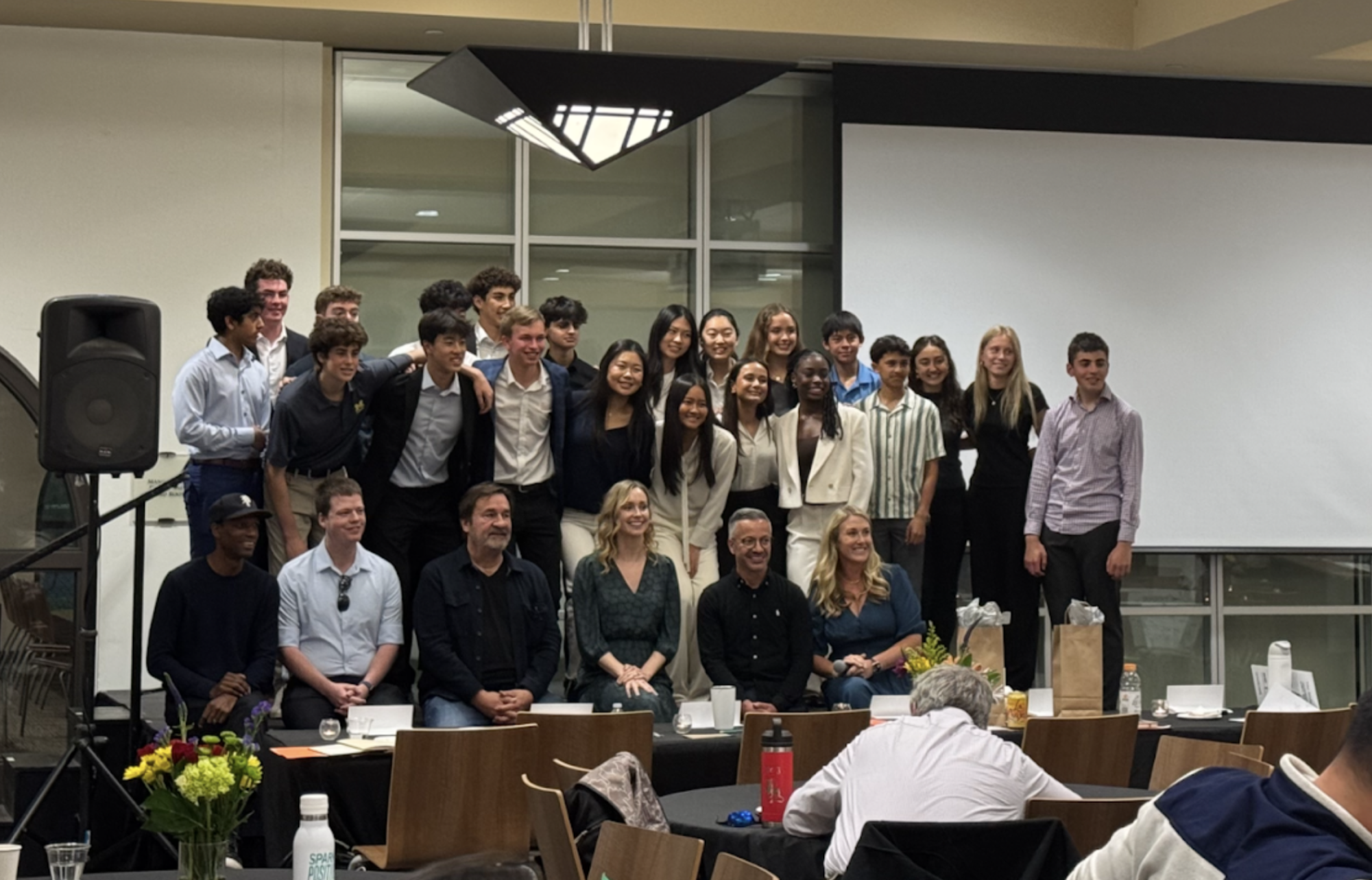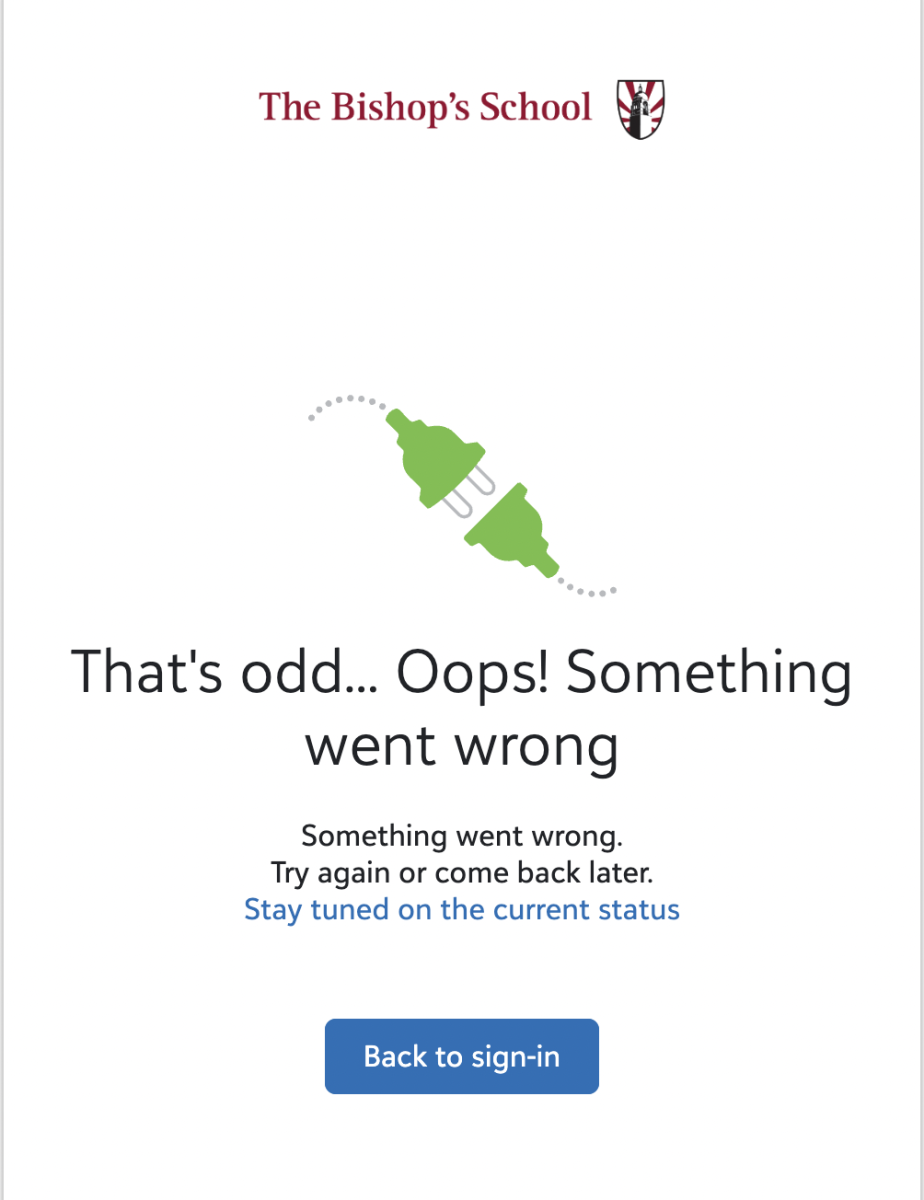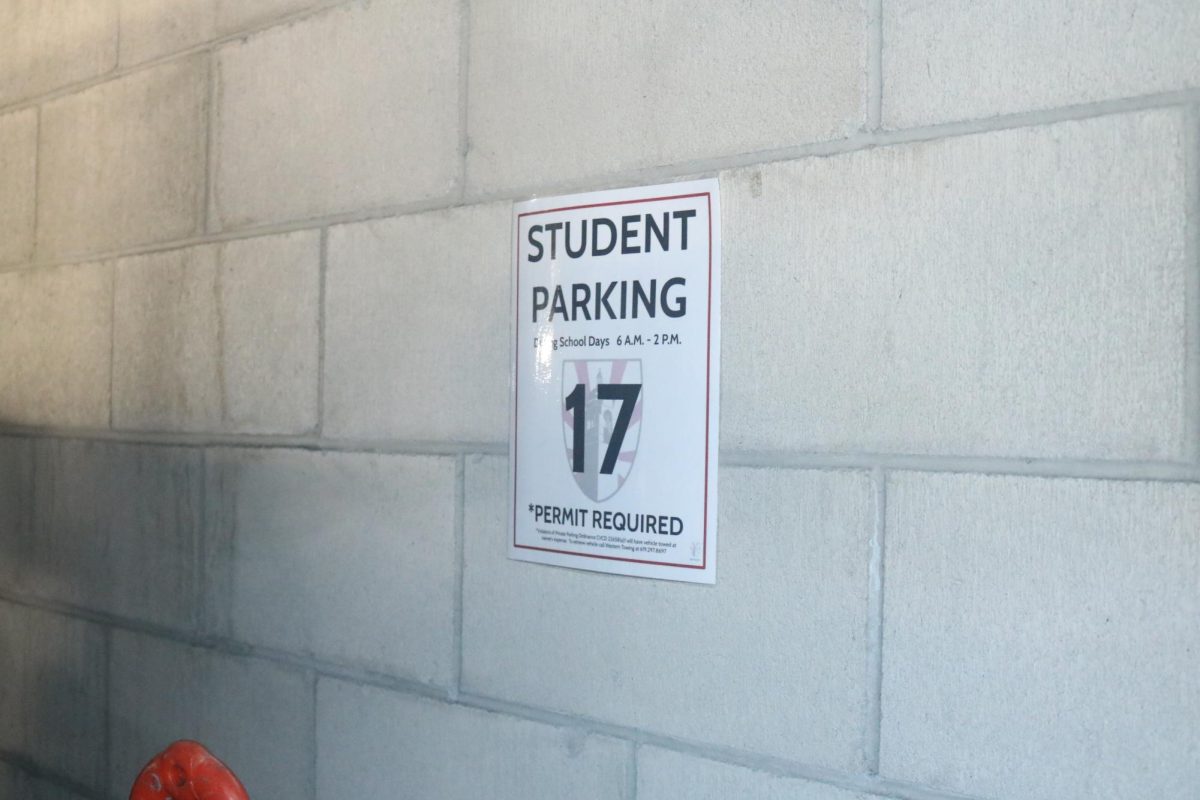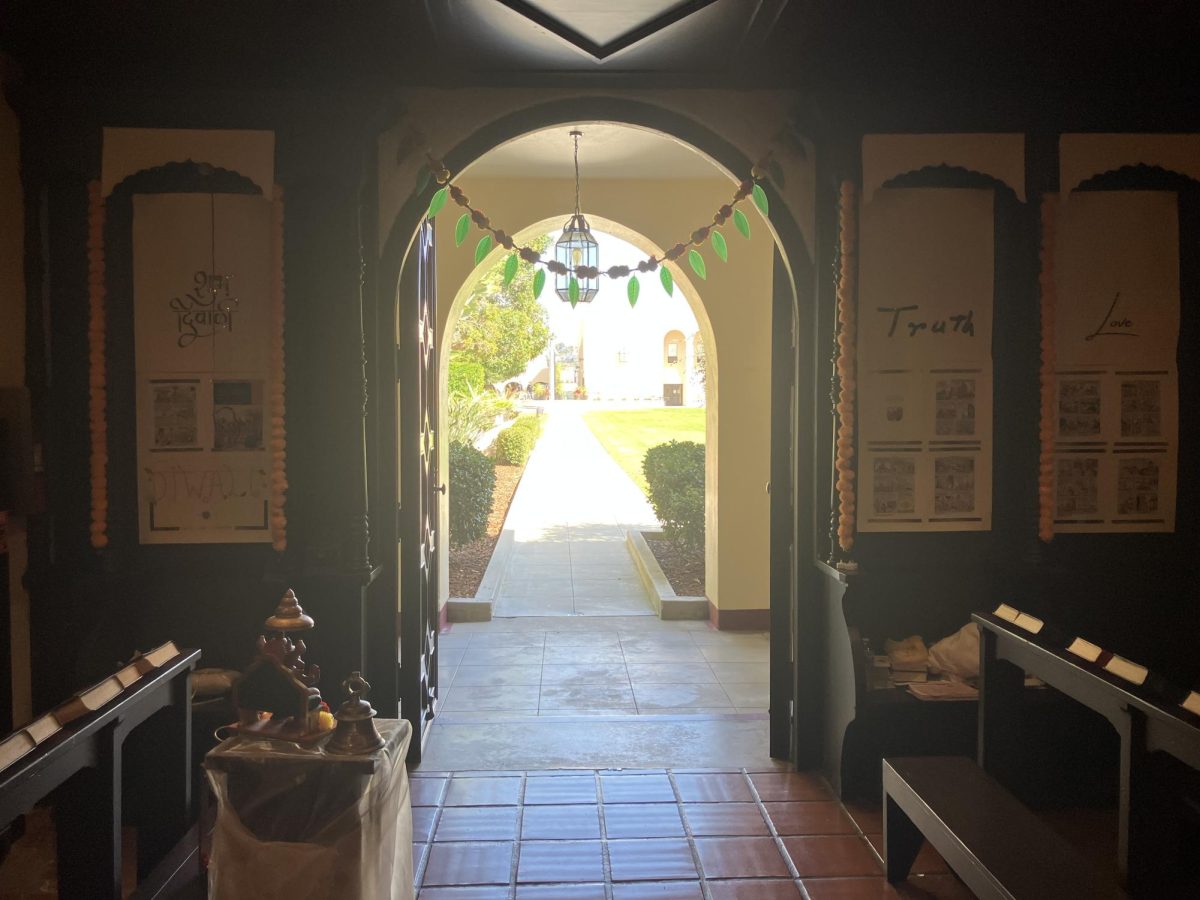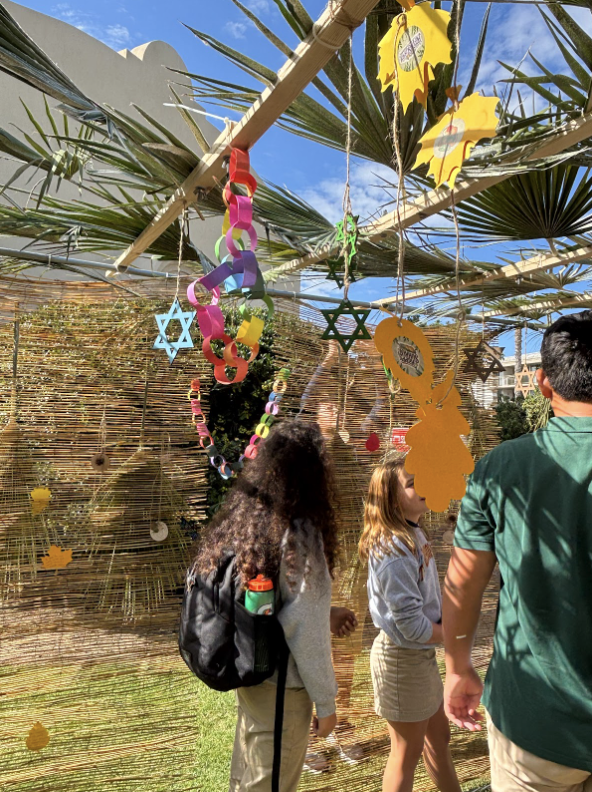“Look up and not down; look out and not in; look forward and not back, and lend a hand.”
Just before the first team took the stage at the Fifth Annual Social Innovation Competition on Friday, April 11, Reverend Simopoulos-Pigato shared this quote by American author Edward Everett Hart — an important reminder that the ultimate goal of the competition was service.
At 5:30 p.m., students, teachers, and faculty members in the Ellen Browning Scripps Hall leaned in to hear the seven teams. These student changemakers had spent the last six months creating unique solutions to some of society’s problems — from sustainable food storage to mental health access.
The process was rigorous — each group thinking, designing, and testing. According to the Social Innovation Timeline Document, teams begin by identifying a problem, often one they’ve seen or experienced firsthand. Then, they research, conduct interviews, and create prototypes. Infographics, pitches, and marketing materials are just a few examples of the requirements for their presentation. Throughout the school year, they attended workshops, forged connections, and reached out to large companies and service organizations, as both Charlie Fredberg (‘27) from Mission RECALL and Kate Bennet (‘27) from Saving Skin explained.
Friday night was the real thing. They each had only a few minutes to explain not just what they built, but why it matters, how it works, and what comes next. Six judges — Mr. Will Shea, the Program Manager at Lucky Duck Foundation, Mr. Kurling Robinson, founder, musician, start-up visionary, and the CEO of Fōkcus, Mr. Michael Balog, Managing Partner of Balog Capital Management, LLC, Ms. Kaitlin Ritsema, Chemistry and Environmental Science Teacher at Bishop’s, and Ms. Jacqueline Gomez, Director of Service & Social Innovation at Bishop’s — then took turns asking questions, giving feedback, and providing advice.
ProTecht
The first team to present, ProTecht, aimed to solve a problem student-athletes know all too well: injuries. Their solution? “An interactive platform offering scientifically backed injury prevention strategies, sport-specific training programs, and expert-driven nutritional guidance,” according to ProTecht’s mission statement.
“We knew injury prevention was big,” Avi Kukreja (‘27) — one of the three founders of ProTecht — said, “But the statistics we saw about injuries in schools showed us that this was a much bigger problem.” What started as a common interest in sports between the three sophomore boys — Avi, Brian Kim, and Kavi Zaveri-Tabb — then transformed into a platform with detailed video tutorials of sport-specific warm-up and cool-down routines, thorough nutrition guidelines, and seasonal training programs.
However, the journey was much more than the final product. According to Avi, it was also about learning how to lead. “Everyone had to take a lead at some point,” he said, “Especially in a long project like this, everyone had to pull their weight.”
As for what’s next, the team hopes to continue exploring the potentials of ProTecht — all while keeping more athletes active.
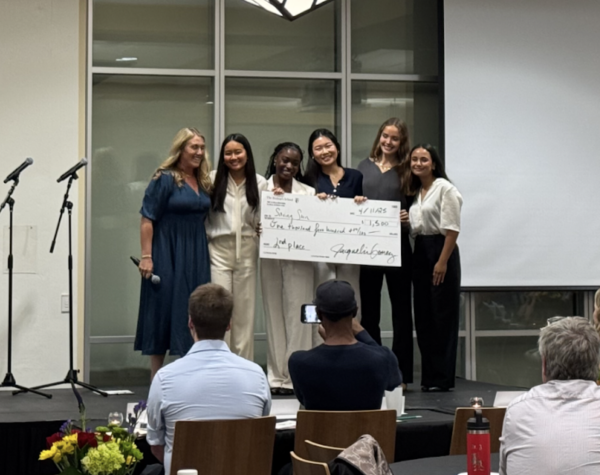
Saving Skin
The idea for Saving Skin came when Kate Bennet (‘27) heard a story about skin cancer. But that spark in the moment changed everything.
The team’s innovation was a sunscreen dispenser modeled after the hand sanitizer ones and they partnered with Sum Bum to make them affordable and accessible.
But it wasn’t always easy. “Getting that partnership was tough,” Kate said. “A lot of the brands we looked at were too expensive. But successfully getting [the partnership] with Sum Bum was definitely a huge win for us.”
With an Instagram campaign and presentations planned for local schools such as La Jolla High School, Torrey Pines High School, and La Jolla Country Day, Saving Skin is spreading awareness to students and “making sunscreen a habit, not a hassle,” like their Mission Statement says.
Looking back, Kate is proud of how far the team has come. “At first, we were kind of all over the place,” she said, smiling. But once they learned how to assign roles and use each other’s strengths, things went more smoothly.
Her advice for future competitors? Start with something personal.
Solmate Backpacks
Solar panels. That’s where the story of Solmate Backpacks began. Living under the constant San Diego sun, founders Evan Hamadeh (‘26) and Gustav Westlake (‘26) knew from the start that their innovation was going to take advantage of the sunny weather. After trialing ideas with a hat and even a tarp, they decided on backpacks for their various applications such as school, camping, hiking.
An integrated lightweight solar panel, a waterproof exterior, and rugged design features built for harsh outdoor conditions — those were the things they decided to incorporate in their final product, as written in their solution statement.
They also take a “two-pronged approach” according to Gustav. Solmate targets not just outdoors hikers, but also the homeless. After researching and having personal conversations with San Diego’s homeless population, the team realized their backpacks could benefit both groups — in their Solmate Giving Back Program, they plan to donate one backpack to the unhoused for every three backpacks sold. As Gustav put it, “We wanted [Solmate] to be something that could help a wide range of people.”
Their motto explains everything: “Solmate’s got your back, anywhere under the sun.”
MC Pouch
“Raise your hand if you’ve thrown out produce in the past week,” Tejas Gluth (‘28) started his presentation with a poll. Almost all hands went up in the air. But the MC Pouch team is here to change that.
Their innovation features a consumer-friendly pouch that significantly extends the shelf life of fruits and vegetables with a federally-approved food additive called 1-MCP in it. It’s safe, useful, and — according to Tejas, who walked a judge through how to use the pouch with a “See how easy that was?” that made the crowd chuckle — pretty practical.
With currently no competition on the market, MC Pouch claims to save families up to $30 a week. The inspiration behind the idea, however, was simple: service hours. “I have to be honest,” Ethan Ben-Yehuda (‘28) said, laughing. “I joined mostly because I wanted my service hours. But then we pivoted, worked hard, and I actually started to like the idea.”
Even though Ethan joked that the science behind it was more “this apple gets brown, this one doesn’t” than actual chemistry, the team ultimately hopes that this solution reduces the 161 billion dollars in lost resources and the millions of individuals who face food insecurity.
As for leadership? “It’s knowing when to have the microphone — and when to pass it off,” Ethan said.
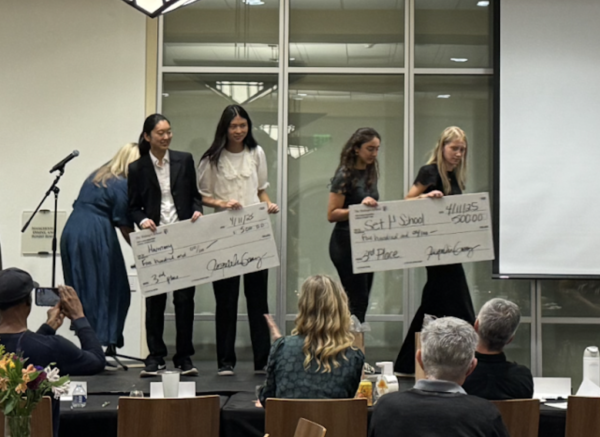
Project Harmony
“Healing starts with harmony.”
That’s the slogan of Project Harmony created by Madison Chen (‘27) and Luming Wang (‘27). It’s a three-in-one package of a social media account, a sleek website, and art therapy workshops designed to provide mental health services to teenagers — especially those in the Asian American and Pacific Islander (AAPI) communities.
For Madison, the nerves during the presentation were real. “I was mostly thinking about holding eye contact with the judges,” she said. But her message was clear: Project Harmony is about dispelling the model minority myth in AAPI families and raising awareness about the issue. “Obviously, Harmony’s not going to be able to solve everything, but I think we’re taking a step towards trying to build a more accepting community.”
Like all the other teams, their path wasn’t always easy either. “Our biggest challenge? Figuring out how to start. You have the idea — but actually getting it off the ground is the hardest part, especially [on Instagram] when you’re trying to get people to follow you and no one knows where you are.” Despite the obstacles, Madison and Luming pushed through. “I’d recommend [Social Innovation] to anyone,” Madison said. “Public speaking, meeting new people, connecting with mentors, like Ms. Gomez, it’s so much fun.”
Mission RECALL
Mission RECALL’s marketing video was quiet but powerful. On the screen appeared the family of Isaac Hoang (‘27), sharing the fun memory of his father and grandfather saving fish from a drying pond. It was clear from the hush over the audience when the video played — Mission RECALL wasn’t just an innovative project, but a deeply human one. Designed to help families of dementia patients reconnect through personalized recorded stories, Mission RECALL is the work of Charlie Fredberg (‘27), Ryan O’Donovan (‘27), Grayson Blatt (‘27), and Isaac.
It’s a project inspired from personal experiences. Charlie’s grandfather was diagnosed with dementia five years ago and passed away just last month. “He lived in St. Louis, Missouri. I think the one thing I regret is not staying connected and not being able to give him the attention the way I wanted.” Charlie shared. Ryan echoed this sentiment. “In my own family, especially on my dad’s side, dementia has affected many people,” he said. “It felt like a shared experience that impacted all of us and we wanted to find a way to address it together.”

The idea was simple, but stunning: users are guided through 50 meaningful questions on their website, record video responses, and upload them where their loved one with dementia can revisit those memories whenever and as much as they want. “[Mission RECALL] helps protect human connection,” Ryan explained, “which we believe is the most important thing people need.”
When the team pitched the idea to Monarch Cottages, a local memory care facility and senior living community, the staff loved it. At the competition, judges, especially those who had experiences with families with dementia, were also impressed by the concept. The current price for their innovation is at $1.99 per month to make it widely accessible. “One judge even told us we weren’t charging enough and that people would pay anything for this,” Charlie said.
Moving forward, the team already has a solid plan. According to Ryan, their few key goals include forming an LLC, securing copyright protection, and improving the design of their site. “We are new and we have a prototype… But there’s much more that we could do to foster that connection,” Charlie concluded.
Set4School
For Bella Bravo (‘26), who was diagnosed with dyslexia in third grade, and Kalia Roper (‘26), who was diagnosed with it last year, Set4School reflects challenges they’ve encountered firsthand. They created a website tackling the misunderstandings and lack of support that many students with dyslexia or ADHD face. It offers guidance, resources, and a starting point for these students, as well as their families and teachers.
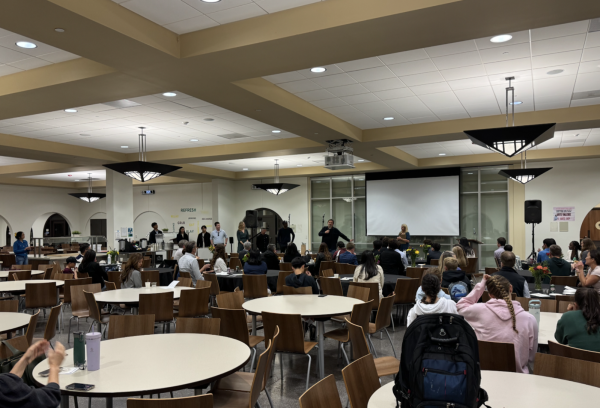
“We understood the problem really well,” Bella explained. “[But the biggest challenge] was how we were going to address that problem.”
They spent months researching and interviewing teachers. Their most powerful testimony? Bella’s own grandmother, a teacher with 30 years of experience who has worked throughout San Diego. “It was surprising how much teachers didn’t talk about dyslexia and neurodiversity even though it is so prominent within students,” Bella said.
After the presentation, she laughed, “I’m still shaking… But I’m really proud we got through it.”
At the end of the night, Mission RECALL and Set4School claimed the Viewers’ Choice Award, the votes tallied based on the audience who scanned a QR code. Based on the six judges’ votes, Set4School and Project Harmony tied for third place, each team earning $500; Saving Skin took second place, earning $1,500; and Mission RECALL clinched first place, earning $2,500.
However, for Ms. Jacqueline Gomez, the director of Service and Social Innovation at Bishop’s, the real award was watching students grow. “Seeing their dedication and growth reminds me why I started this in the first place, to empower young changemakers who are truly ready to make a difference in the world,” she said. “The quality and originality of the projects have skyrocketed… These ideas are not only smart but deeply rooted in empathy and real-world needs.”
Judge Ms. Ritsema was especially impressed by the students during Q&A sessions in their presentations. “[The judges] weren’t shying away from asking questions they would ask of adults,” she commented. “The students handled those well in the moment… I was also impressed at the many materials that students created… A ton of preparation went into this beyond just the moment each team spent on the stage.”
Now five years old, the Social Innovation Competition continues to grow in size and connections — but its mission remains the same. As Ms. Gomez put it, “It’s about lighting a fire within them that keeps burning… not just with this idea but hopefully new ideas in the future.”
